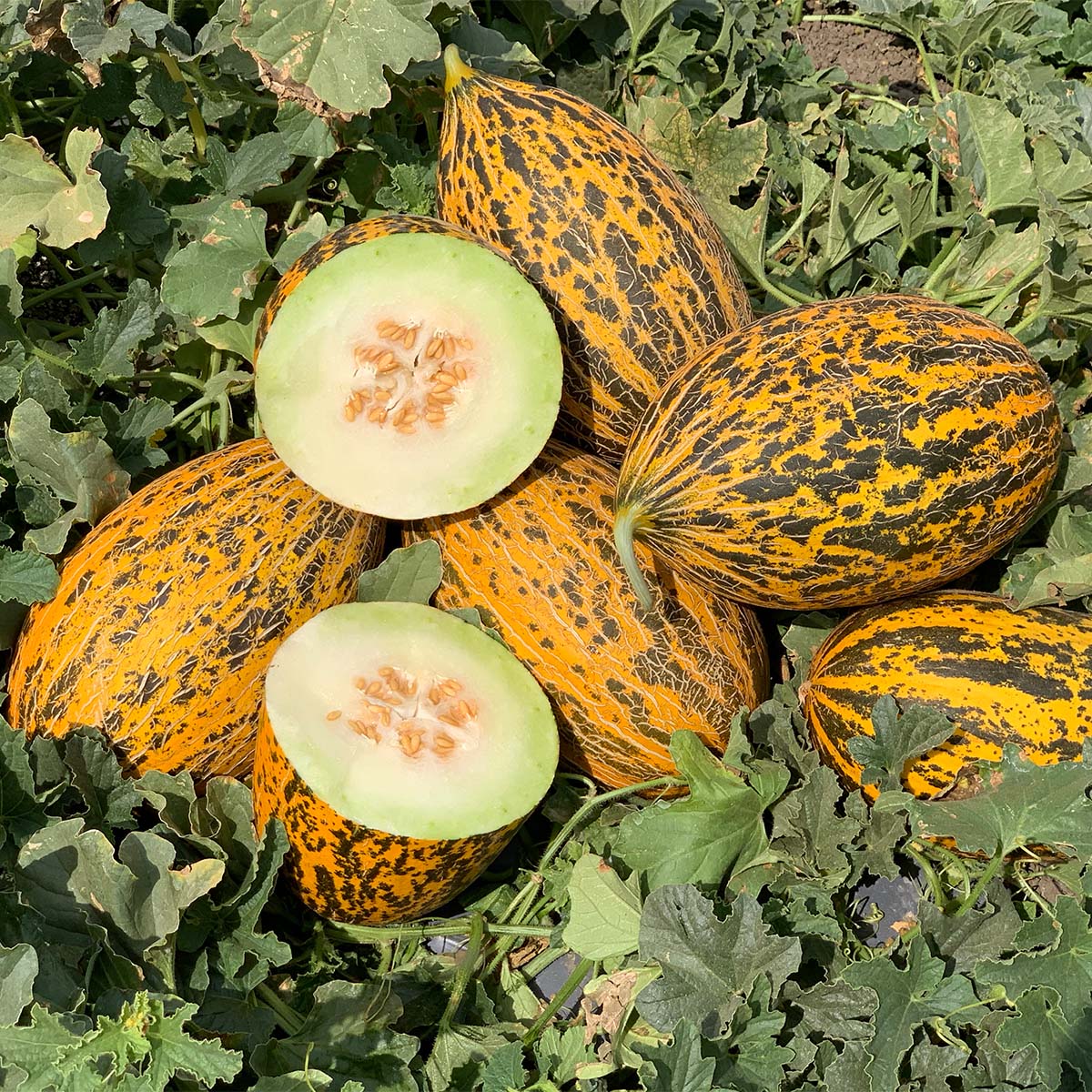Melon (Cucumis melo) is a creeping-stemmed, annual herbaceous plant belonging to the gourd family (Cucurbitaceae). Native to Central Asia, Iran, and Anatolia, melon is now grown in tropical and subtropical regions worldwide.

Melon
Physical Specifications
Melon prefers warm climates and grows in well-drained, warm, nutrient-rich soils. Due to cross-pollination, growing different melon varieties together can increase yield.
- Stem and Leaves: The melon plant is recognized by its creeping stems and large, heart-shaped leaves.
- Flowers: The melon plant is monoecious (hermaphroditic), meaning it has both male and female flowers on the same plant. The flowers emerge from the leaf axils and require bees for pollination.
- Fruit: The melon fruit is known for its fleshy and juicy texture. The inside is usually sweet and contains many seeds. The fruit rind can be smooth or wrinkled, depending on the variety.
Nutritional Value and Health Benefits
Melon is a low-calorie fruit with a water content of 90%. It contains about 34 calories per 100 grams and is rich in vitamins A and C. It also contains potassium, B vitamins, and some minerals.
- Immune System: Thanks to its vitamin C and potassium content, it strengthens the immune system.
- Heart Health: The potassium content supports heart health and helps prevent arterial blockages.
- Digestive System: The fiber content facilitates digestion and alleviates constipation.
- Skin Health: It moisturizes the skin and supports skin health.
Production and Consumption
According to the Food and Agriculture Organization (FAO) of the United Nations, approximately 23.5 million tons of melon were produced worldwide in 2019. China produces the most melons, with 13.5 million tons from 479.000 hectares of land. Iran and Turkey are the next largest producers. Turkey ranks second globally with 1.7 million tons of melon produced on 81.700 hectares. Melon production in Turkey is concentrated in the Aegean and Mediterranean regions, with the provinces of Adana, Konya, Denizli, Antalya, Ankara, and Manisa being prominent producers.
In conclusion, melon has high nutritional value and numerous health benefits.

